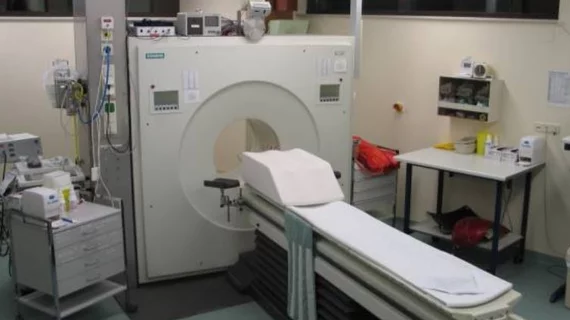Cutting radiation exposure in half during PET/CT using virtual CT scans
The use of artificial intelligence can significantly reduce the amount of radiation patients are exposed to during PET/CT scans that monitor treatment efficacy.
This new finding was presented at the Society of Nuclear Medicine and Molecular Imaging’s annual meeting being held this week in Vancouver. The method, which was developed by the National Cancer Institute, is said to by-pass the need for CT-based attenuation correction by using an AI method that can generate virtual attenuation-corrected PET images. This would, in turn, reduce the CT portion of PET/CT scans and allow for more frequent PET imaging without added radiation exposure.
The model’s development included 305 18F-DCFPyL PSMA PET/CT studies, each of which included three scans—non-attenuation-corrected PET, attenuation-corrected PET and low-dose CT. The scans were divided into three groups—training, testing and validation. Researchers used a 2D Pix2Pix generator to create synthetic attenuation-corrected PET scans from the initial non-attenuation-corrected group of PET scans.
Two blinded nuclear medicine physicians evaluated 40 of the scans to assess the amount and location of PET-positive lesions, as well as image noise and quality. This resulted in acceptable sensitivity for lesion detection using gen-PET images. Importantly, the gen-PET images also produced a significant reduction in radiation exposure, according to the experts.
“High-quality artificial intelligence-generated images preserve vital information from raw PET images without the additional radiation exposure from CT scans,” said Kevin Ma, PhD, a post-doctoral researcher at the National Cancer Institute in Bethesda, Maryland. “This opens opportunities for increasing the frequency and number of PET scans per patient per year, which could provide more accurate assessment for lesion detection, treatment efficacy, radiotracer effectivity, and other measures in research and patient care.”
The SNMMI abstract can be viewed here.
For more information on SNMMI’s 2022 meeting, click here.
Related PET/CT news:
New radiohybrid PET imaging agent increases detection of prostate cancer recurrence
PET/CT offers 'significant prognostic advantage' to patients newly diagnosed with multiple myeloma

